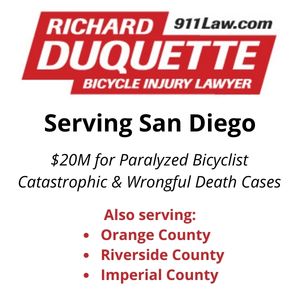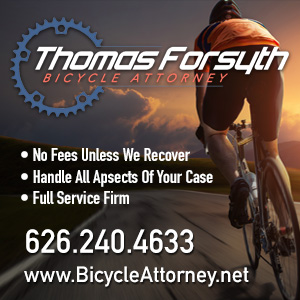Someday it’s gonna rain, someday it’s gonna pour, someday that old dry river, it won’t be dry any more. — Dry River, Dave Alvin & The Guilty Men
 Los Angeles tried to kill its river.
Los Angeles tried to kill its river.
Unlike other cities where life revolves around the streams at their hearts, L.A.’s central river has been abused and ignored, and all but forgotten.
Admittedly, it was an act of self-defense, after one too many violent floods. And so they dammed it and tore up the riverbed, straightened its course and lined it with concrete to in an attempt to tame the usually mild and sometimes wild river and transform it into the world’s largest culvert system.
Instead they created a popular movies set, home to key scenes in everything from Grease and Chinatown to Terminator 2 and Transformers. As well as a massive canvas for countless taggers. And the site of odd events and dramatic rescues, human and otherwise, that transfix L.A. nearly every time it rains.
And so the city turned away from it, other than a relative handful of cyclists who continued to ride the bikeway that follows the river channel for much of its lower length. Sometimes holding their nose.
Yet, the river refused to die.
And in a comeback every bit as improbable and unexpected as Robert Downey Jr. or Mickey Roarke — or Jay Leno, for that matter — the L.A. River is slowly coming back to life.
 Led largely by groups such as Friends of the Los Angeles River and L.A. Creak Freak’s Joe Linton and associates, efforts are under way to revitalize the river, and extend the bikeway its full length, from the harbor in Long Beach to Canoga Park.
Led largely by groups such as Friends of the Los Angeles River and L.A. Creak Freak’s Joe Linton and associates, efforts are under way to revitalize the river, and extend the bikeway its full length, from the harbor in Long Beach to Canoga Park.
 Now one of the key steps in that revitalization, the new park on the site of the former Albion Dairy in Lincoln Heights, is up for review. While the deadline for offering comments online has passed, you can still comment on the plans — and insist on the inclusion of a bikeway paralleling the river — from 6:30 to 8:30 pm this Thursday at the Downey Recreation Center, 1772 N. Spring Street.
Now one of the key steps in that revitalization, the new park on the site of the former Albion Dairy in Lincoln Heights, is up for review. While the deadline for offering comments online has passed, you can still comment on the plans — and insist on the inclusion of a bikeway paralleling the river — from 6:30 to 8:30 pm this Thursday at the Downey Recreation Center, 1772 N. Spring Street.
There will also be free refreshments, which should be enough to get the cycling community out.
Speaking of the L.A. River, Joe Linton offers advice on who to call on those not-infrequent occasions when the access gates to the county’s many river-channel bikeways remain locked long after the risk of rushing water has passed.
And no, it’s not Joe. Or Stephen Box. Or even me, for that matter.
Meanwhile, you have a perfect opportunity to explore the L.A. River bikeway for yourself at the recently announced Los Angeles River Ride.
Sponsored by the LACBC — which has been revitalized itself in recent years — the L.A. River Ride is one of the city’s largest and most popular rides. It’s scheduled for Sunday, June 6th, with rides ranging from a 15-mile Family Ride and free Kids Ride to a relatively flat Century. And just about everything in between.
Full information and registration form for the 10th Annual L.A. River Ride are available by clicking here.
From what I’ve heard, it’s a lot of fun.
So maybe this time, you’ll see me there. And vice versa, I hope.
Update: Janette Hoffman emailed to remind me about the role the L.A. River Ride has played in pushing for the revitalization of the river, with a 2006 postcard campaign urging the mayor to complete the bike path — including the recently completed section between Fletcher and Fig, which will be part of this year’s ride. She also met with the Gateway Council of Governments in 2008, resulting in re-striping of the path and removal of graffiti between Maywood and Long Beach.
………
California’s car-centric Traffic Control Devices Committee (CTCDC) gave a big, fat screw you to cyclists at a meeting in San Diego last week, refusing to allow cyclists to be represented on the committee. The Times looks at the big changes taking place in suddenly bike-friendly Long Beach, yet fails to note the death of a cyclist there just a few weeks ago. Enci Box explains how to make L.A. safe, effective and more enjoyable for cyclists. Damien Newton notes that comments may not be allowed when the Council considers the anti-harassment ordinance tomorrow, but suspects Rosendahl might argue otherwise if a lot of cyclists show up. Dr. Alex argues that speed limit increases should be put on hold at the TranspoComm meeting that follows. The LAPD busts a Downtown bike theft ring selling hot bikes on Craigslist. Living well without a car. A helmetless Pink and husband ride the streets of L.A.; Carson Daley puts on his helmet and sticks his tongue out at photographers on Ocean Blvd. A town in North Carolina considers a clearly well thought-out plan to ban bikes from the bike path. BikeDenver unveils a series of public service announcements to promote bike safety. A look at Carlos Bertonatti, the drunken schmuck musician who kept going after driving over — and killing — a Miami cyclist last week. Kenosha, WI revises their cycling laws after a cyclist is ticketed for drinking from his water bottle. Yet another city gets (legal) sharrows before L.A., this time in New York’s lower Hudson Valley. Bike Radar provides a heads-up for the upcoming Handmade Bike Show and Rocky Mountain Bicycle Fest. A New Hampshire man threatens cyclists, misses his arraignment, and gets a slap on the wrist. Sydney replaces the site of drunken brawls with a hub for cyclists, including outdoor café, bike shop and showers. Hello, is anyone in L.A. listening? Hello? Finally, a Hummer driving cyber bully threatens cyclists in New Zealand — and claims to have already run two off the road — then quickly backs off after riders unmask his identity; thanks to the Trickster for the heads up!









